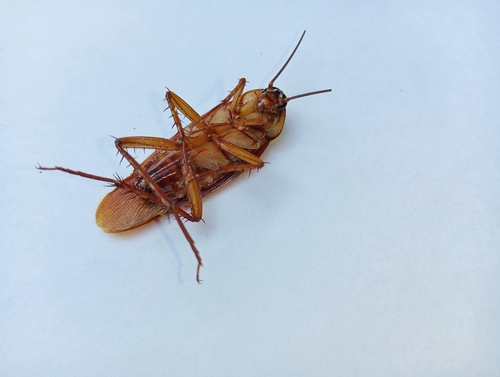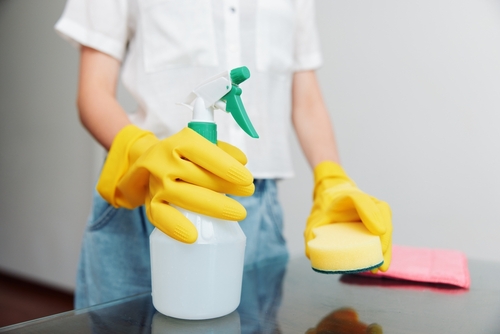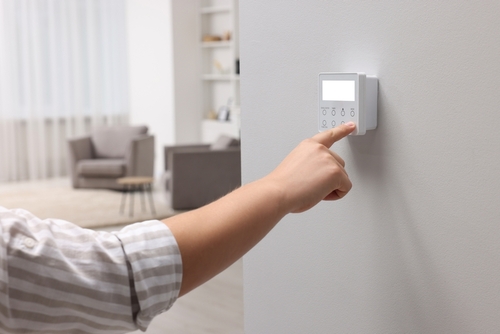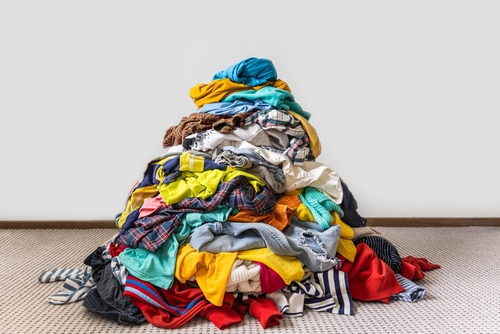When allergy season hits, many families rush to shut the windows and retreat indoors, assuming the air inside is safer. But what if your home is actually making you sneeze? While it may feel like a controlled environment, indoor air often contains hidden allergens that can seriously disrupt your family’s comfort and health. These triggers can cause everything from mild symptoms like itchy eyes and sneezing to more serious problems like asthma flare-ups, chronic sinus infections, and fatigue. The worst part? Many of them are easy to overlook because they hide in your everyday routines, inside your laundry machine, behind your couch, or even in the products you use to keep your home clean. Understanding what these surprising indoor allergens are and how they work can help you make smart changes that protect your family’s well-being. With the right prevention strategies, you can keep the air fresh, your spaces clean, and your health on track, without turning your home into a sterile, scentless cave. Let’s walk through the most common culprits you might not expect.
Hidden Mold in Unexpected Places

When you think of mold, a damp basement or a flooded bathroom might come to mind. But mold is sneakier than that. It thrives in areas you rarely check, like under your kitchen sink, inside your dishwasher, around window frames, or even beneath wallpaper. If your home has high humidity, poor ventilation, or any kind of leak, you’re offering mold the perfect place to grow. Mold spores are airborne and tiny enough to infiltrate every corner of your home. You won’t always see mold, but you’ll notice the effects—constant sneezing, congestion, itchy eyes, or worse, chronic respiratory issues and skin irritations. Children and older adults are especially vulnerable. To fight back, keep your indoor humidity below 50%. Use exhaust fans while cooking or showering, and fix leaks promptly. A dehumidifier can make a huge difference in mold-prone areas like basements and laundry rooms. For persistent cases, professional mold remediation might be necessary.
Dust Mites in Sofas and Stuffed Toys

Most people know about dust mites in mattresses, but these microscopic creatures are everywhere soft and warm—including your favorite recliner, carpets, curtains, and children’s stuffed toys. They feed on dead skin cells and love humidity, making your cozy home their paradise. Their droppings and body fragments are what cause allergic reactions. These can include runny noses, wheezing, eczema flare-ups, or itchy eyes. The bad news? Vacuuming alone won’t eliminate them, especially from deeply woven fabrics. Combatting dust mites requires a multi-layered approach. Wash bedding and soft toys in hot water weekly. Use dust-mite-proof covers on pillows and mattresses. Vacuum carpets and upholstery with a HEPA-filter vacuum. And consider replacing carpeting with hard flooring in sensitive areas like bedrooms or nurseries.
Cockroach Droppings and Body Parts

You might think a clean home means no cockroaches, but that’s not always the case. These pests only need a tiny amount of food or water to survive. Even if you rarely see one, their droppings, saliva, and shed body parts may still be triggering allergies behind the scenes. Cockroach allergens are potent and especially harmful for children and individuals with asthma. They tend to collect in kitchens, under appliances, or in tight wall spaces, releasing irritants into the air as they go about their business. The best defense is prevention. Seal cracks and holes in walls or baseboards. Store food in sealed containers, clean up crumbs promptly, and never leave standing water. If you suspect a cockroach issue, bring in professional pest control—sprays and traps alone often aren’t enough to eliminate the allergen risk.
Read More: How Frequently Should You Be Washing Your Household Towels?
Indoor Plants That Trigger Allergies

Houseplants are often marketed as natural air purifiers, but not all are allergy-friendly. Some common varieties like ficus, palms, and ferns can emit pollen or develop mold in their soil. Overwatering adds to the problem, creating a damp environment perfect for spore growth. What’s more, the very dust that settles on plant leaves can combine with pollen or mold and be re-released into the air when disturbed. For sensitive family members, this can trigger sneezing, sinus congestion, and even asthma attacks. To keep plants without the problems, choose low-pollen varieties like snake plants, spider plants, or peace lilies. Water only when the soil is dry, and clean leaves regularly. If symptoms persist, consider switching to artificial plants or limiting greenery to well-ventilated rooms.
Fragrance in Cleaning Products

A fresh lemon scent doesn’t always mean “clean.” Many household cleaning products, laundry detergents, and air fresheners use synthetic fragrances loaded with volatile organic compounds (VOCs). These VOCs can trigger headaches, coughing, wheezing, and throat irritation, especially in children. Even “green” or “natural” products may include irritants under vague labels like “fragrance.” In closed spaces with poor ventilation, VOCs can linger for hours after use and affect sleep or mood without you realizing the source. Switch to fragrance-free cleaning solutions or those with essential oils in low concentrations. Always read labels and avoid products that don’t fully disclose ingredients. Open windows during and after cleaning, and skip plug-in air fresheners entirely if someone in your family has chemical sensitivities.
Pet Dander Hiding in Carpets

Even if your pet doesn’t shed much, they’re still leaving behind allergens. Pet dander, tiny flakes of skin, can trigger powerful reactions, especially in people with asthma or eczema. Unlike hair, dander is invisible and incredibly sticky, embedding itself in rugs, furniture, and air vents. Pet allergens are persistent. They float in the air for hours and can cling to clothes, spreading beyond your home. Even homes without pets can have dander if someone brings it in on their clothes from work or school. To minimize reactions, bathe pets regularly and brush them outdoors. Limit their access to bedrooms and invest in HEPA air purifiers. If possible, remove wall-to-wall carpeting and replace it with hardwood or tile flooring. Always wash pet bedding and toys weekly.
Scented Candles and Incense Smoke

Scented candles and incense can create a soothing atmosphere, but they also release irritants that worsen indoor air quality. The burning process emits particulate matter, benzene, and formaldehyde, compounds known to aggravate allergies and asthma. Even candles labeled as “natural” can emit smoke and VOCs. Incense, in particular, produces dense smoke that can hang in the air long after burning. For those with respiratory conditions, this exposure can cause coughing, throat irritation, or even shortness of breath. Choose soy or beeswax candles with 100% cotton wicks and no added dyes or perfumes. Use them sparingly and only in well-ventilated rooms. If scent is important, consider diffusing essential oils instead—just make sure the oils don’t cause reactions themselves.
HVAC Systems That Aren’t Maintained

Your heating and cooling system circulates air throughout your home, but if it’s dirty, it’s also circulating allergens. Dust, pet dander, mold, and even pests can accumulate in air ducts and filters over time, creating a constant loop of airborne irritants. You may not notice the issue until someone starts coughing more at night, waking up with congestion, or having allergy-like symptoms year-round. HVAC-related allergens often go undiagnosed because they’re invisible and gradually worsen over time. Replace HVAC filters every 30 to 90 days, depending on your household size and whether you have pets. Schedule annual inspections, and have your ducts cleaned every few years, especially if you’ve done renovations or recently moved into an older home.
Laundry Left Damp Too Long

Leaving wet clothes in the washing machine or a damp towel on the floor might seem harmless, but it creates a perfect environment for mold and mildew. These fungi thrive on moisture and organic material, releasing spores that trigger respiratory problems and skin irritation. Once mildew gets into fabrics, it can be hard to fully remove, even after multiple washes. Worse, it can transfer to other clothes and spread through your laundry area. Always dry clothes immediately after washing. Don’t let towels sit in hampers when they’re wet, and clean your washing machine monthly with vinegar or special cleaners. Hang laundry in well-ventilated areas, and avoid piling damp clothes or towels on top of each other.
Books and Paper Collecting Dust

Stacks of old books, newspapers, and magazines might give your home character, but they’re also magnets for dust mites and mold. Paper absorbs moisture easily, and once mold spores take hold, they can release allergens into the air every time you disturb the pile. Dust also accumulates quickly in forgotten paper stacks, especially in corners or rarely used rooms. For allergy sufferers, this buildup can mean daily sneezing fits, runny noses, or even skin issues like hives or eczema. Minimize paper clutter by scanning documents and storing them digitally. Keep bookshelves clean and dry, and consider using glass-fronted cases to reduce dust accumulation. If you must store old papers, seal them in plastic bins and keep them off the floor.
Final Thought

The truth is, your home might be a bigger source of allergens than the great outdoors. While it feels secure and familiar, the air inside can harbor a surprising variety of irritants—from microscopic dust mites to moldy laundry to VOCs in your favorite candle. Many of these triggers build up slowly, silently undermining your family’s health and making everyday symptoms feel normal when they shouldn’t be. But you’re not powerless. With a bit of awareness and regular maintenance, you can dramatically reduce your exposure. That means cleaner air, fewer health issues, and a home that truly supports your family’s well-being. Don’t wait until someone starts coughing or sneezing to investigate what’s in your air. Small changes, like swapping out scented products, keeping humidity low, and cleaning smart, can make a huge impact. When your indoor space is truly allergen-aware, everyone breathes easier, sleeps better, and lives healthier.
Read More: 33 Medications Every First Aid Kit Needs

